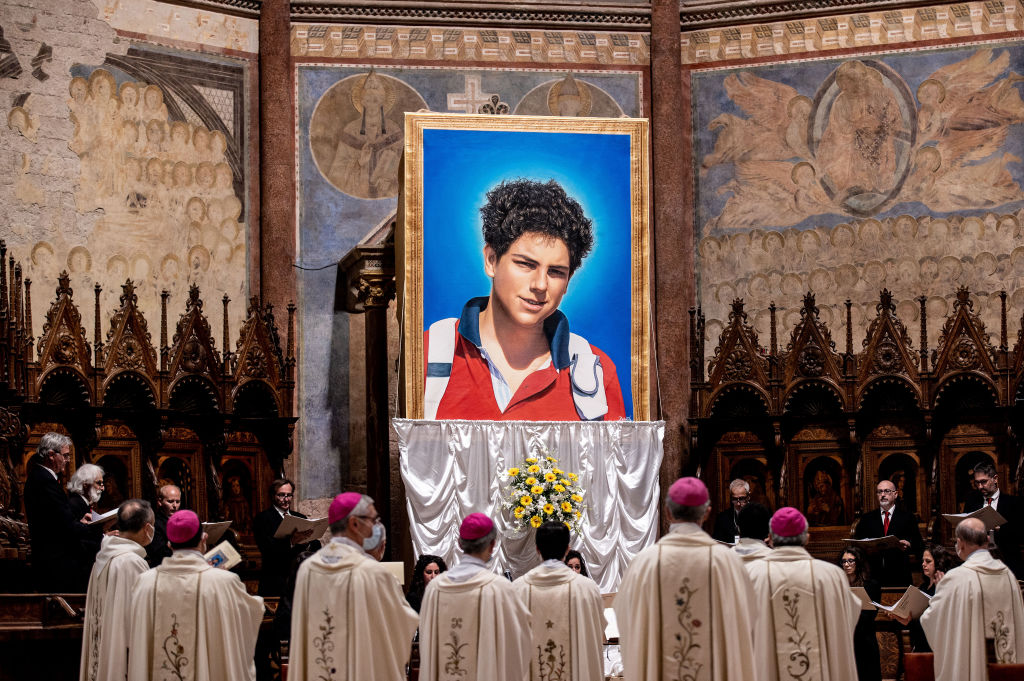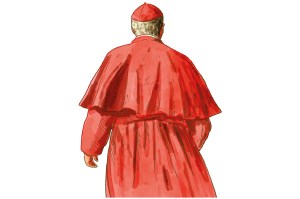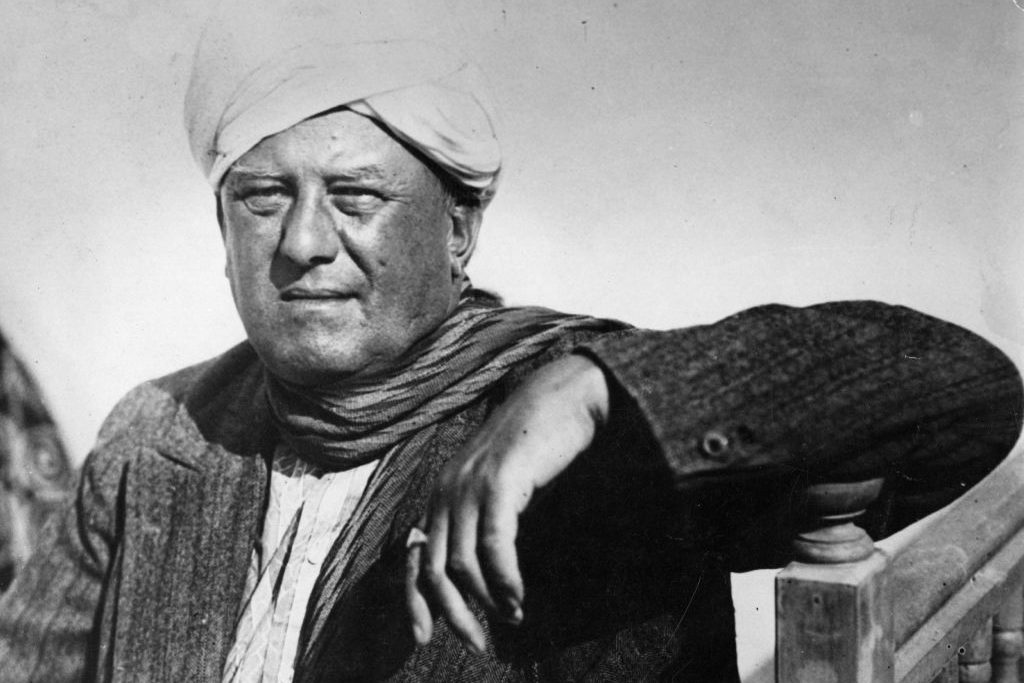Assisi
In a medieval church built of white stone, pilgrims and tourists shuffle past the body of a 15-year-old boy in a tomb with a glass side. The boy is handsome, with dark curly hair, and wears a blue tracksuit top, jeans and Nike trainers. Everyone peers through the glass and some realize, with a start, that the perfectly preserved face and hands are eerily lifelike silicone.
The real remains, which have been decomposing for almost 20 years, are inside the effigy. This is Carlo Acutis, the Italian teenager known as “God’s influencer,” who is about to become the first millennial saint of the Roman Catholic Church.
The tomb is supported from behind and so appears to levitate, surrounded by a corona of bright light. Two middle-aged women from the Philippines press rosary beads to it and pose for photographs, one at either end. A smart young couple take their son out of his pushchair to touch the glass. They have come from Portugal to thank Carlo. They prayed to him when their little boy was in hospital with meningitis and he was “saved.” The father calls Carlo “a new hope for these coming times.”
Carlo’s devoted followers also post prayers on social media. “Blessed Carlo, heal my son, help him to walk again… Blessed Carlo, ask Jesus to forgive me for starting a fight with the wife after a few drinks… Blessed Carlo, please ask Jesus to heal my grandson’s cancer… I lift up my nephew for a miraculous healing from autism… Heal me of my diabetes… Treat my anxiety.” His tomb is streamed live by webcam 24/7. You can buy a huge range of merchandise online: socks embroidered with Carlo’s face, rosary beads, fridge magnets, key rings, a six-foot painted statue for $13,000.
There is a powerful and prolific cult of Carlo, nurtured by the Church. The Catholic authorities fulfilled his wish to make Assisi his final resting place at the spot where Saint Francis cast off his clothes to stand naked before God. They disinterred Carlo’s body, buried in 2006, to be “reassembled with art and love,” as the Archbishop of Assisi put it.
They displayed him in casual clothes suited to the first millennial saint. Here was a normal kid who liked playing video games as well as going to Mass, though obviously he is very far from normal. He was due to be declared a saint by Pope Francis. That duty will now fall to another Pope.
Before he died of leukemia in 2006, Carlo created a website about miracles linked to the Eucharist
Carlo’s mother, Antonia Salzano, tells me how he grew up to become “patron saint of the internet.” She is in her late fifties and wears a black dress like a nun’s habit. I ask what it’s like to be parent to a saint. She is one of only a handful of people in the history of the Church able to answer this question. The process of Carlo’s canonization has moved with extraordinary speed – other saints wait centuries. She replies: “Of course, it’s strange, the devotion he has all over the world. But this is a work of God, it’s impossible for a human being.”
Carlo was born in London in 1991. Antonia saw “something special” in him straight away. At the time, she and her husband were not Catholic believers, so they called him “the little Buddha.” He was “always smiling, never complaining, very obedient, so generous.” She says he uttered his first words at three months old; at five months, he could speak; aged seven, he started asking to go to church every day. The family moved back to Italy, and he took food and blankets to beggars in the streets of Milan. He wouldn’t let his mother buy him a second pair of shoes while others were starving.
These are the well-known stories of the Carlo legend. Antonia is fuming over a piece in the Economist expressing doubts of his sanctity and calling her the “driving force” behind the movement to canonize her son. It even quotes his school friends as saying he didn’t appear especially pious or devout. “Lies,” she says. “If you don’t meet God, you are in the darkness, so you see things in a wrong way. We pray for these people.”
Before he died of leukemia in 2006, Carlo created a website about miracles linked to the Eucharist. These included wine turning visibly into blood; the face of Jesus appearing in a consecrated wafer; donkeys joining a Communion procession and genuflecting before the Host; and bread changing into a bloody piece of heart tissue. The Church has recognized all these as miracles. Carlo would get two of his own.
The first was in Brazil in 2013. A four-year-old boy was dying because he had a malformed pancreas that made him vomit after eating. His mother took him to kiss a piece of cloth cut from Carlo’s shirt (a so-called “second-class relic” – something owned by a saint). The boy went home to eat steak and chips and made a full recovery. In 2022, a young woman from Costa Rica fell off her bike in Florence. She had a brain hemorrhage and was put on a ventilator. After her mother prayed at Carlo’s tomb, the girl began to breathe on her own and the bleeding stopped.
I asked the Archbishop of Assisi, Domenico Sorrentino, if these two people hadn’t simply recovered on their own – a more likely explanation than supernatural intervention. He explained that “the word miracle means amazing, surprising” and that God sometimes surprises us by breaking the laws of the natural world. Isn’t it unfair to help some and not others? The Archbishop said that God is a father who wants his children to grow by “experiencing the difficulties of this world.”
A “first-class” relic of Carlo, a sliver of his pericardium – the tissue around the heart – is often on tour. Monsignor Anthony Figueiredo, a Londoner now based in Assisi, is one of its “guardian-porters.” He witnessed “joy and fervor” when he took it to packed churches in Britain and Ireland.
Despite the Church’s message that suffering is redemptive, people are desperate for relief in this world of pain, for someone like Carlo to intercede on their behalf. Figueiredo talks to me about the strange journey of the relic, though he might be speaking about the whole cult of Carlo: “It gives people hope and we need hope in this world.”
This article was originally published in The Spectator’s June 2025 World edition.


























Leave a Reply